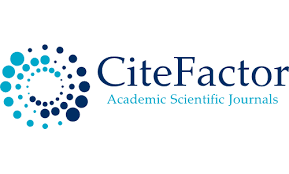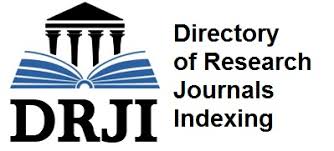Investigating TikTok Ramifications on Pakistani Zoomers
Keywords:
TikTok, cyberbullying, harassment, threats, anxiety, inattention, depressionAbstract
Background of the Study: TikTok is presently one of the most popular and widely used social networking applications that Zoomers is addicted to, which is causing a lot of social and psychological issues among Zoomers. This study aimed to determine the relationship between TikTok usage and social and psychological ramifications among Pakistani Zoomers.
Methodology: A cross-sectional study method was used. A total of 384 Pakistanis born during the years (1997- 2006) were targeted via an online 18-item questionnaire. A convenient sampling technique was used, and the data was analyzed using innovative Partial Least Squares (PLS) software. Structural equation modelling and correlation were used to analyze the data.
Results: The study’s results indicated a strong positive relationship between TikTok usage and social and psychological ramifications among Pakistani Zoomers. The results’ significant P-values and beta values were positive and less than 0.05.
Conclusion: The study concluded that TikTok usage had resulted in cyberbullying, security threats and harassment issues, and also it had caused depression, insomnia, inattention and anxiety issues among the users. Henceforth, zoomers should be aware, guided, counselled and trained to overcome the adverse ramifications of TikTok. Policies to prevent cyberbullying and harassment should be planned, informed and implemented to promote peace and security.
References
1. Basu, T. (2020). Teens are anxious and depressed after three hours a day on social media. MIT Technology Review. https://www.technologyreview.com/2019/09/11/133096/teens-are-anxious-and-depressed-after-three-hours-a-day-on-social-media/
2. Becker, J. M., Cheah, J. H., Gholamzade, R., Ringle, C. M., & Sarstedt, M. (2023). PLS-SEM’s most wanted guidance. International Journal of Contemporary Hospitality Management, 35(1), 321-346.
3. Butt, A., R. (2019). TikTok - An Emerging Life Threat. Retrieved from: https://www.phoneworld.com.pk/tiktok-an-emerging-life-threat/
4. Cuofano, G. (2020). TikTok Business Model: The Rise Of Creative Social Media Powered By AI. FourWeekMBA. https://fourweekmba.com/tiktok-business-model/
5. Dimock, M., 2019. Defining generations: Where Millennials end and Generation Z begins. Pew Research Center, 17(1), pp.1-7.
6. Feng, Y. L., Chen, C. C., & Wu, S. M. (2019, November). Evaluation of charm factors of short video user experience using FAHP–A case study of Tik Tok App. In IOP conference series: Materials science and engineering (Vol. 688, No. 5, p. 055068). IOP Publishing.
7. Gröber, L., Arshad, W., Goetzen, A., Redmiles, E. M., Mustafa, M., & Krombholz, K. (2024). " I chose to fight, be brave, and to deal with it": Threat Experiences and Security Practices of Pakistani Content Creators. In 33rd USENIX Security Symposium (USENIX Security 24) (pp. 19-36).
8. Gulzar, T., Nazir, A., Mehmood, H., & Noureen, A. (2024). Impulsivity, Digital Maturity, and Morality of Pakistani TikTok Users. Human Behavior and Emerging Technologies, 2024(1), 6002586.
9. Hair Jr, J. F., Hult, G. T. M., Ringle, C. M., Sarstedt, M., Danks, N. P., & Ray, S. (2021). Partial least squares structural equation modeling (PLS-SEM) using R: A workbook (p. 197). Springer Nature.
10. Hellemans, J., Willems, K., & Brengman, M. (2021, May). The New Adult on the Block: Daily Active Users of TikTok Compared to Facebook, Twitter. In Advances in Digital Marketing and eCommerce: Second International Conference, 2021 (p. 95). Springer Nature.
11. Henseler, J., Ringle, C. M., & Sarstedt, M. (2015). A new criterion for assessing discriminant validity in variance-based structural equation modeling. Journal of the academy of marketing science, 43, 115-135.
12. Hermann, J. (2019). How TikTok Is Rewriting the World. Retrieved from: https://www.nytimes.com/2019/03/10/style/what-is-tik-tok.html
13. Hyacinth, N. A. (2021). Social media effects on mental behaviour: A study of “selfitis” among undergraduates of a Nigerian university. Health Communication and Disease in Africa: Beliefs, Traditions and Stigma, 271-286.
14. Jabeen, S., Chaudhary, M. U., & Munir, M. (2024). Tiktok's Impact on Mental Health among Pakistani Youth. International Journal of Social Science Archives (IJSSA), 7(3).
15. Kalkbrenner, M. T. (2023). Alpha, omega, and H internal consistency reliability estimates: Reviewing these options and when to use them. Counseling Outcome Research and Evaluation, 14(1), 77-88.
16. Karim, S., Bibi, A., Nazik, A., & Karim, R. (2025). IMPACT OF SOCIAL MEDIA ON MENTAL HEALTH OF YOUNG ADULTS IN PAKISTAN. Insights-Journal of Life and Social Sciences, 3(1), 102-108.
17. Katz, E., Blumler, J. G., & Gurevitch, M. (1973). Uses and gratifications research. The Public Opinion Quarterly, 37(4), 509-523.
18. Malloli, S. (2020). Unit-3 Uses and Gratification Theory.[Master’s of Arts Thesis, Journalism & Mass Communication]. Indira Gandhi National Open University, New Delhi.
19. Mata-López, W. A., Juárez-Hernández, L. G., Tobón, S., & Montesinos-López, O. A. (2021). ANALYSIS OF CONSTRUCT VALIDITY AND RELIABILITY OF TWO INSTRUMENTS TO EVALUATE PROFESSIONAL ORIENTED ACTIVITIES. Revista Española de Orientación y Psicopedagogía (REOP), 32(2).
20. Meola, A. (2020). Analyzing TikTok user growth and usage patterns in 2020. [online] Business Insider. Available at: https://www.businessinsider.com/tiktok-marketing-trends-predictions-2020.
21. Monti, C. B., Ambrogi, F., & Sardanelli, F. (2024). Sample size calculation for data reliability and diagnostic performance: a go-to review. European Radiology Experimental, 8(1), 79.
22. Pandya, A., & Lodha, P. (2021). Social connectedness, excessive screen time during COVID-19 and mental health: a review of current evidence. Frontiers in Human Dynamics, 3, 684137.
23. Pavlov, G., Maydeu-Olivares, A., & Shi, D. (2021). Using the standardized root mean squared residual (SRMR) to assess exact fit in structural equation models. Educational and Psychological Measurement, 81(1), 110-130.
24. Rahman, A. T. A., Kanyo, N. I., Hairuddin, S., & Sufianto, N. A. F. M. (2022). Social Media and Moral Decline of Muslim Youth in Sabah.
25. Rasoolimanesh, S. M. (2022). Discriminant validity assessment in PLS-SEM: A comprehensive composite-based approach. Data Analysis Perspectives Journal, 3(2), 1-8.
26. Safdar, G., Fatima, S. N., & Khan, A. W. (2024). Examining the Psychological Consequences of TikTok Usage on Young Females in Pakistan. Journal of Mass Communication Department, Dept of Mass Communication, University of Karachi, 30.
27. Saleem, S., Khan, N. F., & Zafar, S. (2021). Prevalence of cyberbullying victimization among Pakistani youth. Technology in Society, 65, 101577.
28. Zahoor, K. (2022). Fear of missing out and social curiosity as predictors of social media addiction in young adults of Pakistan. Clinical and Counselling Psychology Review, 4(1), 65-81.
Downloads
Published
Data Availability Statement
The authors have not made any research data available.
Issue
Section
License
Copyright (c) 2025 Archives of Management and Social Sciences

This work is licensed under a Creative Commons Attribution 4.0 International License.








